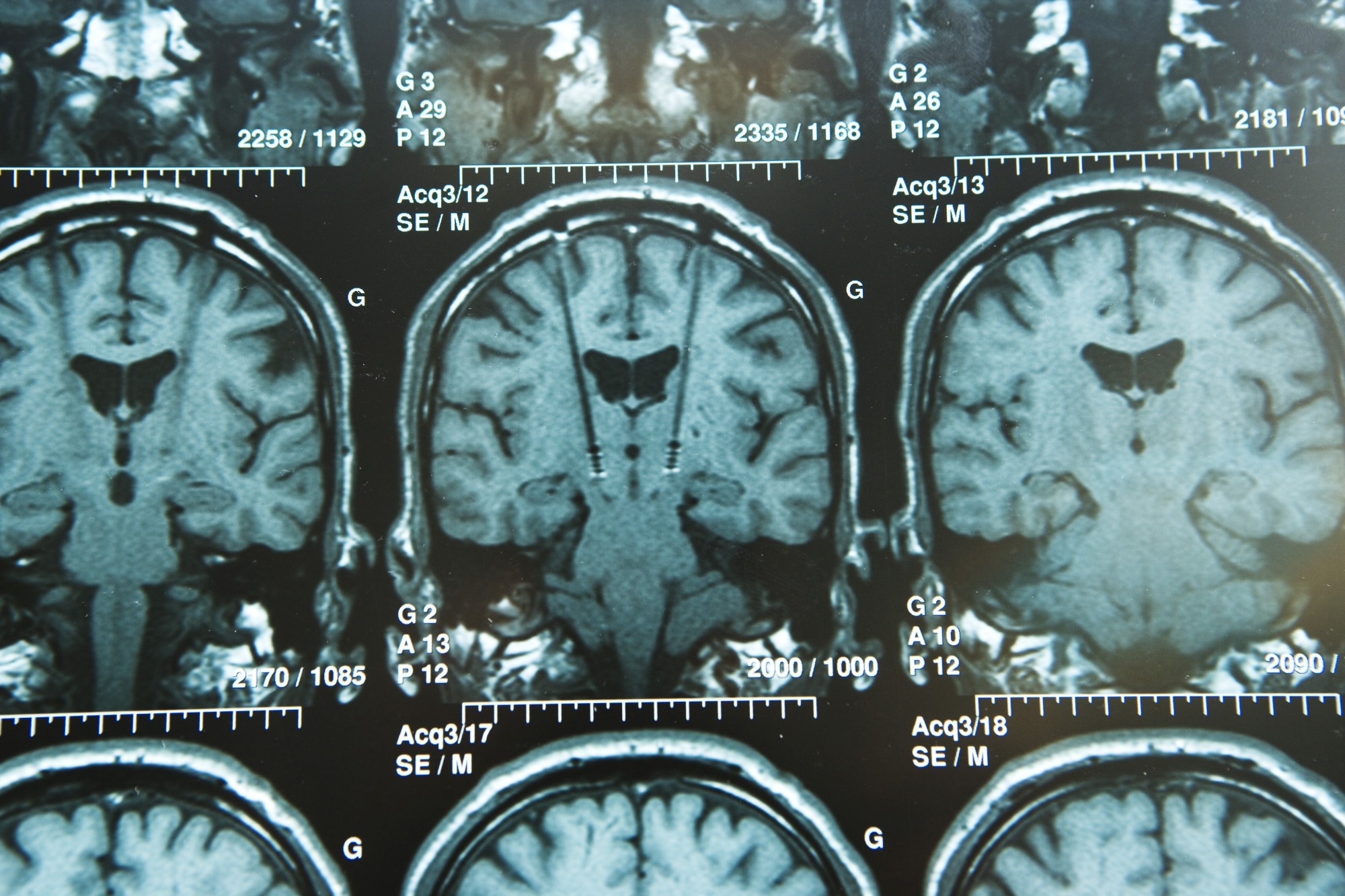Dec 4 2023
In a recent study published in Nature Medicine, a group of researchers evaluated the safety and efficacy of deep brain stimulation in the central lateral (CL) nucleus of the thalamus and medial dorsal tegmental (DTTm) tract for improving executive function and processing speed in patients with moderate-to-severe traumatic brain injury (msTBI).
 Study: Thalamic deep brain stimulation in traumatic brain injury: a phase 1, randomized feasibility study. Image Credit: Image Point Fr/Shutterstock.com
Study: Thalamic deep brain stimulation in traumatic brain injury: a phase 1, randomized feasibility study. Image Credit: Image Point Fr/Shutterstock.com
Background
msTBI typically has long-term effects on cognition, emotion, and behavior, with cognitive impairment leading to persistent functional impairment.
Impairment commonly involves executive control, attention, processing speed, and resistance to mental fatigue, leaving more than five million people in the United States (U.S.) unable to regain their pre-injury community functioning levels.
The existing treatment of these cognitive impairments is not effective. Remediation requires a difference in the pathophysiology of msTBI from that of mild TBI. Evidence points to the dysfunction of the frontal cortex and striatum neurons, especially involving the CL nucleus of the thalamus, a key node in frontostriatal networks crucial for executive functions.
Underactivation of CL is thought to contribute to the downregulation of these networks post-injury.
Further research is needed to devise targeted therapies that effectively address the enduring cognitive deficits in executive function, attention, working memory, and processing speed resulting from msTBI, as these areas remain insufficiently treated by existing methods.
About the study
The present study recruited participants through multiple avenues, including self-referral and partnerships with organizations serving TBI patients.
The process was expedited with the assistance of PatientWing, a digital media marketing firm, which utilized online platforms and a print campaign in California bus stations to reach potential candidates.
Training for conducting telephone-based screening interviews and administering the Computed tomography-deep brain stimulation (CT-DBS) Multi-Dimensional Outcome Assessment Battery was provided to call center personnel and research coordinators by key study staff. Regular supervision and troubleshooting meetings ensured the quality of test administration.
A REDCap database with automated error checks ensured the data quality. It was an Institutional Review Board (IRB)-approved single protocol study at Stanford University. Participants gave written informed consent according to Consolidated Standards of Reporting Trials (CARE) guidelines and Helsinki principles.
The inclusion criteria emphasized subjects having a past of moderate to severe TBI, aged between 22 and 60 years, were fluent English users, and could not resume their vocational or academic function before injury.
A White-material-nulled magnetization-prepared rapid gradient echo (WMn-MPRAGE) protocol and diffusion tensor imaging (DTI) protocol were performed on a 3T GE MR750 imaging machine.
DBS electrode placement was planned surgically based on an algorithmic approach in a three-step mode targeting the CL nucleus with adjacent DTTm tissue. A postoperative CT scan was done to assess the true locations of the DBS leads.
Electroencephalography (EEG) was carried out in an advanced mode of a 256-channel device, followed by complex artifact elimination and clearance procedures. The final data were used to create mean evoked potential maps for each contact configuration on the lead.
Study results
The study demonstrated that DBS of the CL nucleus of the thalamus and the associated medial CL/DTTm tract significantly improved executive function and processing speed in patients with msTBI.
Each of the five participants showed improvement on Trail Making Test Part A (TMT-A) task, which reflects a good visual search function while meeting the 10% criterion for the quality of life scale on the attention subdomain.
Furthermore, enhancements appeared in the Ruff2&7 test, an assessment of sustained focus under pressure, with augmentations in speed gap ranging from 12% to 68%.
Two participants advanced from lower to upper-moderate disability categories, demonstrating improvement in work output and participation in social activity.
As such, safety was carefully monitored during the procedure, and adverse events were mostly mild and self-limiting. Another patient who required implant removal due to the development of a postoperative infection, and one more person with probable stimulation symptoms.
To ensure precision, a specialized data processing pipeline was developed for electrode implantations within the human CL/DTTm. This involved the use of white-matter-nulled Magnetic Resonance Imaging (MRI), DTI, automated thalamic segmentation, and biophysical modeling of applied electric fields.
Electrode placements were organized within a synthetic atlas, showing a tight clustering of active contacts for left-hemisphere electrodes around the CL/DTTm fibers. It was found that evoked responses measured through EEG exhibited the highest amplitude in the frontal region of the ipsilateral hemisphere.
The primary outcome measure TMT-B, which assesses attentional control, showed an average 31.7% reduction in performance speed after three months of CL/DTTm DBS.
Improvements were also observed in TMT-A performance, Trails B-A time, TBIQoL-Attention, and TBIQoL-Executive Function. These results align with improvements seen in nonhuman primates performing executive tasks during CL/DTTm DBS.
The study also found that the primary effects of CL/DTTm stimulation likely depend on the activation of large myelinated axons within CL/DTTm, with additional contributions from axons of cells within closely positioned paralaminar regions of the median dorsalis nucleus.
The resulting increase in excitatory synaptic activity on monosynaptically connected neocortical and striatal neurons induced by CL/DTTm DBS is proposed to underlie the behavioral improvements observed in the study.
Journal reference:
- Nicholas D. Schiff, Joseph T. Giacino, Christopher R. Butson, et al. (2023) Thalamic deep brain stimulation in traumatic brain injury: a phase 1, randomized feasibility study, nature medicine, doi: https://doi.org/10.1038/s41591-023-02638-4.